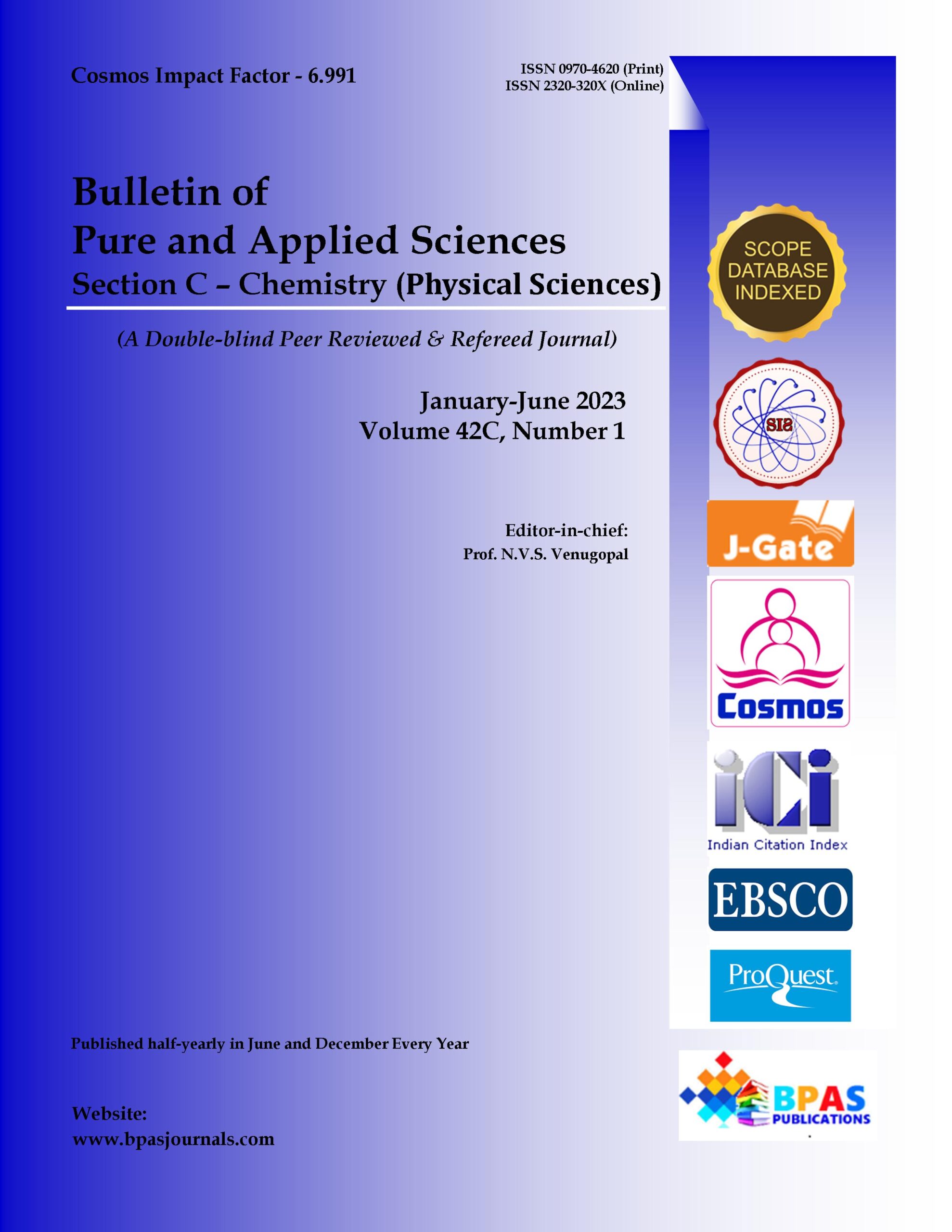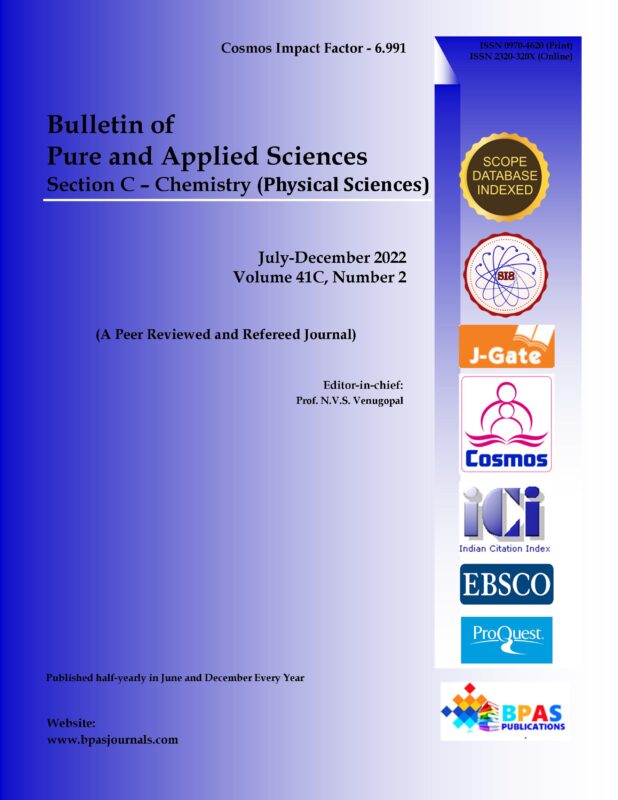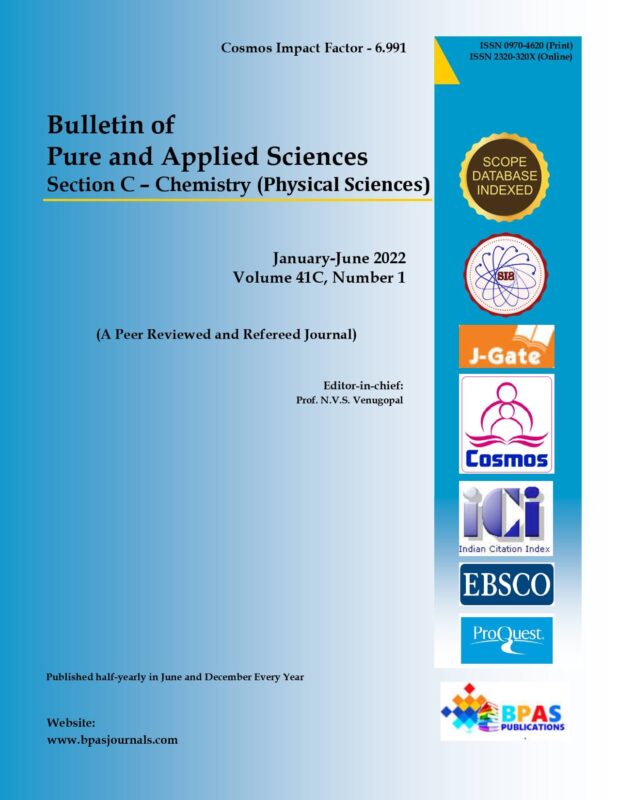Excess Molar Volume for Cyclohexanone (C6H10O) with Chloroalkanes at 303.15K
9.38$
Excess Molar Volume for Cyclohexanone (C6H10O) with Chloroalkanes at 303.15K
1Atri D. Tripathi* and 2Souvik Sur
Original Article
Bulletin of Pure and Applied Sciences.
Chemistry , Vol.42 C, No.1
January-June 2023: P.9-13
DOI: 10.48165/bpas.2023.42C.1.2
Description
Excess Molar Volume for Cyclohexanone (C6H10O) with Chloroalkanes at 303.15K
1Atri D. Tripathi* and 2Souvik Sur
Author Affiliations
1Department of Chemistry, Faculty of Engineering, Teerthanker Mahaveer University, Moradabad, Uttar Pradesh 244001, India.
2Research and Development Center, Teerthanker Mahaveer University, Moradabad, Uttar Pradesh 244001, India.
*Corresponding Author
Atri D. Tripathi, Department of Chemistry, Faculty of Engineering, Teerthanker Mahaveer University, Moradabad, Uttar Pradesh 244001, India
E-mail: atri34tmu@gmail.com
Received on 27.12.2022, Revised on 07.02.2023, Approved on 23.02.2023, Accepted on 31.03.2023, Published on 20.06.2023



